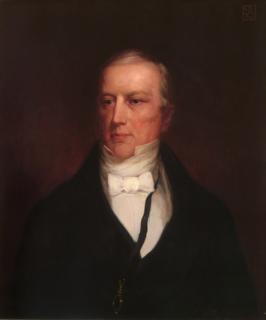Related Research Articles

The 1826 and 1827 United States House of Representatives elections were held at various dates in each state in 1826 and 1827 during John Quincy Adams's presidency.

The 1827 United States Senate election in New York was held on February 6, 1827, by the New York State Legislature to elect a U.S. Senator to represent the State of New York in the United States Senate.

The 1829 United States Senate special election in New York was held on January 15, 1829, by the New York State Legislature to elect a U.S. Senator to represent the State of New York in the United States Senate.
The 1826 and 1827 United States Senate elections were elections that had the majority Jacksonians gain a seat in the United States Senate.

The 1826 United States House of Representatives elections in New York were held from November 6 to 8, 1826, to elect 34 U.S. Representatives to represent the State of New York in the United States House of Representatives of the 20th United States Congress.
The 1824 and 1825 United States Senate elections were elections for the United States Senate that saw the Jacksonians gain a majority over the Anti-Jacksonian National Republican Party.

On August 26, 1825, before the first session of the 19th Congress began, James Allison, Jr. (J) of Pennsylvania's 16th district resigned. A special election was held to fill the resulting vacancy.

On January 12, 1826, Patrick Farrelly (J) of Pennsylvania's 18th district died in office. A special election was held to fill the resulting vacancy

On May 1, 1826, Alexander Thomson (J) of Pennsylvania's 13th district resigned. A special election was held to fill the resulting vacancy on October 10, 1826, the same day as the general elections to the 20th Congress.

At some point in 1826, Joseph Hemphill (J) of Pennsylvania's 2nd district resigned from Congress. A special election was held to fill the resulting vacancy.

On August 14, 1826, Henry Wilson (J) of Pennsylvania's 7th district died. A special election was held to fill the resulting vacancy on October 10, 1826.

In the 1826 elections in Pennsylvania, a tie vote occurred in the 2nd district. As a result, no candidate won in that district and a special election was held on October 9, 1827.
A special election was held October 2, 1827 in Delaware's at-large congressional district to fill a vacancy caused by the resignation of Louis McLane (J) before the start of Congress, after being elected to the Senate

A special election was held in Georgia's 2nd congressional district in 1827 to fill a vacancy caused by the resignation of John Forsyth (J).

A special election was held in Kentucky's 2nd congressional district on August 4, 1828 to fill a vacancy in Kentucky's representation.

Two special elections were held in Kentucky's 11th congressional district in 1827 to fill a single vacancy.
A special election was held in Massachusetts's 1st congressional district on July 23, 1827 to fill a vacancy caused by the resignation of Daniel Webster (A) on May 30, 1827 after being elected to the Senate.
The 1826 United States elections occurred in the middle of Democratic-Republican President John Quincy Adams's term. Members of the 20th United States Congress were chosen in this election. The election took place during a transitional period between the First Party System and the Second Party System. With the Federalist Party no longer active as a major political party, the major split in Congress was between supporters of Adams and supporters of Andrew Jackson, who Adams had defeated in the 1824 Presidential election.
References
- 1 2 20th Congress membership roster Archived 2013-03-04 at the Wayback Machine
- ↑ Election results from OurCampaigns.com